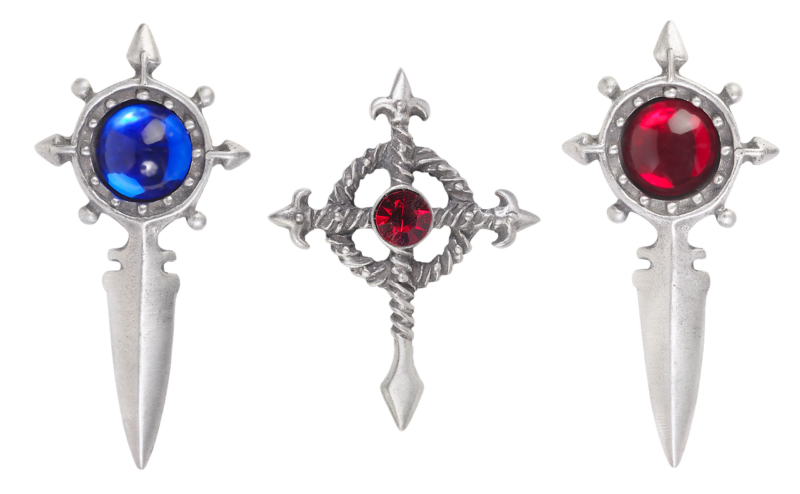The Role of Feathers, Gems, and Metals in Ancient Jewelry and Their Symbolic Meanings
November 17, 2024

Jewelry has transcended centuries and cultures, serving not only as adornment but also as a medium of expression and symbolism. In ancient societies, jewelry was much more than an accessory; it held profound significance, often representing spiritual beliefs, status, or cultural identity. In this comprehensive exploration, we will delve into the roles of feathers, gems, and metals in ancient jewelry, and the complex meanings attributed to each element.
1. The Significance of Feathers in Ancient Jewelry
Feathers have long been used in various forms of jewelry across multiple cultures. From Native American tribes to the ancient Egyptians, feathers were prized for their beauty and their connections to the divine. Here’s how feathers played a crucial role in ancient jewelry:
- Symbol of Power and Status: In many indigenous cultures, the type and color of feathers used in jewelry indicated status and rank. For instance, in Native American culture, eagle feathers represented bravery and honor, often adorned in ceremonial headdresses or necklaces.
- Connection to the Spiritual World: Feathers were considered a bridge between the earthly realm and the sky, symbolizing communication with the divine. Ancient Egyptians believed feathers were the embodiment of the goddess Ma’at, representing truth and justice. Thus, jewelry incorporating feathers signified purity and truthfulness.
- Artistic Expression: The use of feathers allowed artisans to demonstrate their creativity. From delicate earrings to intricate headpieces, the vibrant colors and textures provided infinite possibilities for unique designs, often showcasing the wearer’s individuality and taste.
The use of feathers in jewelry illustrates a blend of aesthetics and spirituality, revealing the meaning placed upon them by ancient civilizations.
2. The Allure of Gems in Ancient Jewelry
Gems and precious stones have enamored mankind for millennia, and their significance in ancient jewelry went beyond their physical beauty. They held meaning that resonated with the wearer’s beliefs, aspirations, and identity. Here are several ways gems shaped ancient jewelry:
- Cultural Significance: Different cultures ascribed various meanings to specific gems. For example, the ancient Greeks valued amethyst for its supposed ability to prevent intoxication, while the Egyptians used lapis lazuli for protection against evil spirits. Each gem’s lore contributed to its desirability and implications in society.
- Symbolism of Transformation and Healing: Many gems were believed to have healing properties. The ancient Romans associated emeralds with love and fertility, while the Greeks regarded coral as a protective charm against accidents and misfortune. Wearing such gems signified the wearer’s connection to those beneficial attributes.
- Display of Wealth and Prestige: The presence of exquisite gems in jewelry often signified the wearer’s wealth and power. Monarchs and rulers often wore intricate crowns and regalia adorned with precious stones, displaying their status and divine right to govern.
Thus, gemstones were not just beautiful ornaments; they played integral roles in reflecting societal values, beliefs, and hierarchies.
3. Metals as Symbols of Strength and Endurance
With the advent of metallurgy, metals began to assume significant roles in ancient jewelry. Different metals held diverse meanings in various cultures, often depicting endurance, status, and spirituality. Here’s a closer look:
- Gold: Revered across civilizations, gold represented purity, divinity, and immortality. The ancient Egyptians believed that gold was the flesh of the gods. Gold jewelry was often used in burials as it was thought to ensure immortality and a comfortable afterlife.
- Silver: Known for its moon-like shimmer, silver was symbolically linked to femininity and the lunar cycles. Ancient cultures, including the Celts, viewed silver as possessing protective qualities and often incorporated it into ceremonial and everyday jewelry for its reputed ability to ward off negative influences.
- Bronze and Copper: These metals, while less precious than gold or silver, played crucial roles in the production of jewelry that indicated social status, utility, and even military valor. Bronze, particularly, was favored for its durability and strength, often used for more functional pieces like brooches and clasps that accompanied clothing and armor.
Metals in jewelry were particularly revered for their lasting qualities, often symbolizing the strength and resilience of the cultures they represented.
4. The Interconnectivity of Feathers, Gems, and Metals
The combination of feathers, gems, and metals in ancient jewelry reflects the interconnectedness of nature, spirituality, and identity. When utilized together, these elements formed powerful symbols that spoke to the beliefs and values of the time:
- Ceremonial Use: In many ancient societies, jewelry composed of feathers, gems, and metals was utilized in rituals and ceremonies. Whether worn during religious rituals or as part of royal regalia, these items served as sacred links between the physical and spiritual realms, often enhancing the significance of the events held.
- Cultural Identity: The degree to which these materials were combined varied widely across cultures, showcasing the diversity and richness of human expression. Each unique combination of feathers, gems, and metals conveyed messages of heritage, community belonging, and shared beliefs within these societies.
- Personal Adornment and Significance: Beyond societal implications, jewelry often held personal significance for the wearer. Pieces combining feathers, precious stones, and metals could symbolize a wealth of experiences, serving as talismans representing individual journeys, aspirations, or memories.
As we explore the historical landscape of ancient jewelry, it becomes clear that the combination of these materials was not arbitrary, but rather a deeply considered expression of identity and belief.
Conclusion: The Lasting Legacy of Ancient Jewelry
The intricate connection between feathers, gems, and metals in ancient jewelry illustrates the rich tapestry of human culture and the myriad meanings we attribute to adornments. These materials have transcended their physical forms, embodying spiritual, cultural, and personal narratives that resonate to this day. Understanding these significances enriches our appreciation of history and offers insight into how ancient civilizations viewed their world.
As we study these ancient artifacts, we not only become more aware of their aesthetic values, but also gain a deeper respect for the representations of ideals that have shaped human experience through the ages.







